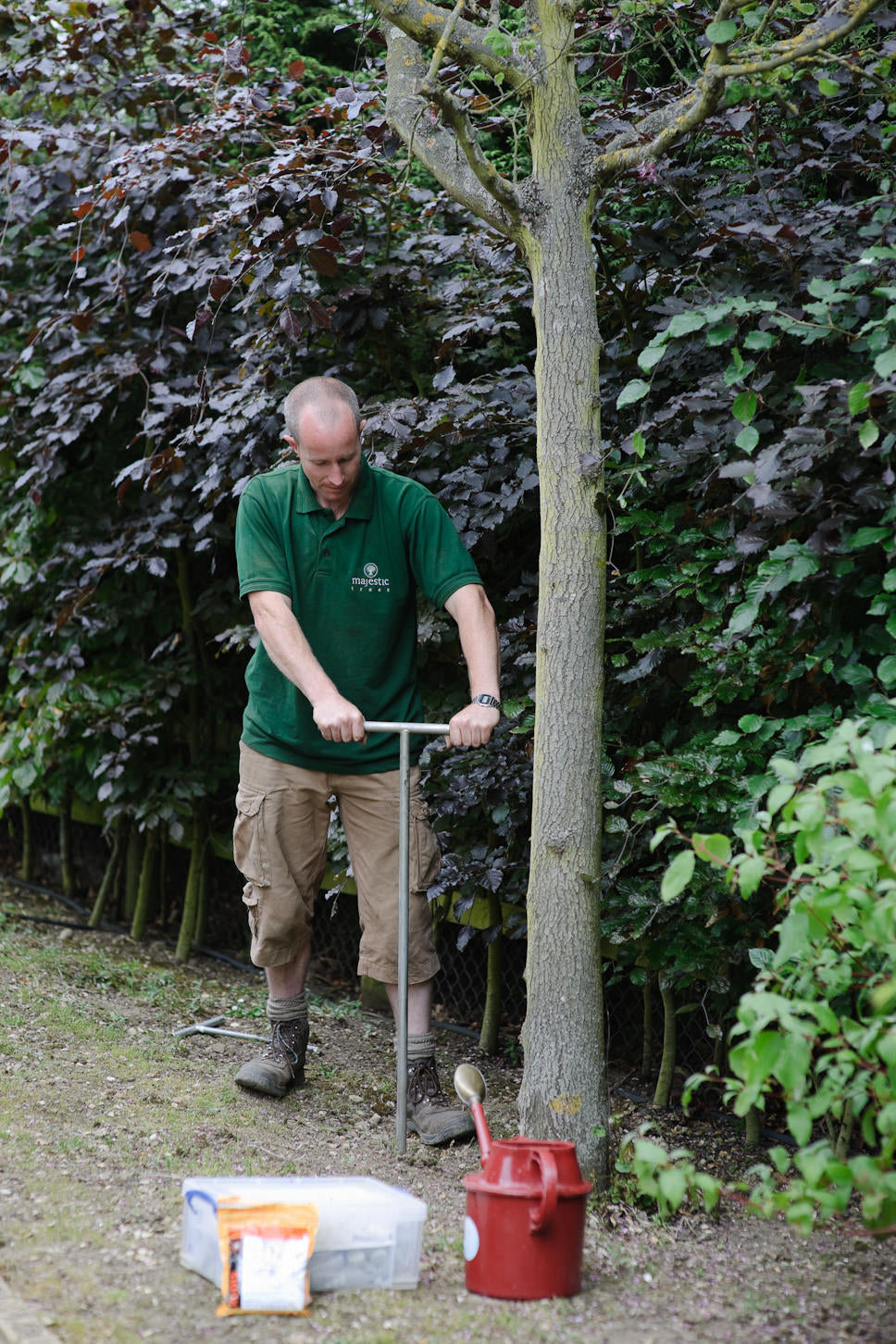If planted and watered correctly, your tree should be settled and thriving by the second to third growing season. In the unfortunate event that your tree still seems to be struggling, here are some of the most common reasons why:
Incorrect watering – either over or under-watering. Refer to this page of the the AfterCare Guide for guidance, or contact us.
Incorrect or loose anchorage – high winds or soft ground can sometimes cause the anchorage system to loosen. It is critical that your tree doesn’t rock in the wind whilst its roots are trying to establish in the ground. Check to be sure the system is taut and that there are no tell-tale cracks in the ground around the rootball where the tree has been rocking back and forth.
Soil/leaf litter build up against the base of the trunk. Trees are often planted too deeply by novices or even professionals, especially if the tree is part of a larger landscaping project, where the ground may be quite churned up when the trees are going in, making it difficult to predict the final soil levels spot on. It’s not uncommon in such cases for the trees to go in first, and then the final soil level to be raised several inches by a layer of topsoil and turf. Even ½ an inch of soil against the base of a tree trunk can be disastrous! Excessive leaf litter can also cause a problem over time. If you suspect this could be the problem, gently dig down near the base of the trunk until you can feel the top most roots (in most cases you will hit the wire net which covered the rootball first). If there is excess soil against the trunk above, clear it and check for any signs of rot on or under the bark. Timely removal of any excess soil build-up may save your tree, but do monitor it closely in future for signs of decay. Left undetected, trunk rot can cause a tree to fail any time from six months to five years after planting.
Fertiliser deficiency. We always plant our trees with fertiliser enriched compost along with slow release fertiliser tablets for the second year, so a tree which starts to look lacklustre down the line may be struggling to find the nutrients it needs in the native soil. To correct, you can begin by applying a general purpose top-dressing (see fertilising your trees). However, if the tree shows no quick improvement, we would strongly recommend you consider having the soil tested. By all means call us to discuss your tree and seek our advice, but inexpensive soil test kits are available at most garden centres, or more sophisticated soil testing is offered by professional organisations. A Google search for 'soil testing uk' should bring up a local provider.
If none of these seem to be the problem, there could be an issue with site compatibility or a more serious problem with your tree’s health, so please do contact us for aftercare advice.


